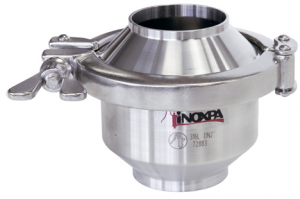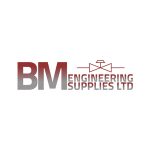BM Engineering explain the functions and advantages of Non-Return Valves
Leading UK supplier of valves and actuated packages, BM Engineering Supplies, provides a range of Non-Return Valves (NRVs) for pumping, water and wastewater applications. PIF spoke to BM Engineering for an in-depth overview of the functions and advantages of NRVs, which we share with you here.
How does a Non-Return Valve function?
Non-Return Valves (also known as check valves or one-way valves) normally allow fluid (liquid or gas) to flow through them in only one direction. These two-port valves have two openings in the body, one for fluid to enter and the other for fluid to leave. Non-Return Valves work automatically, which means that most are not controlled by a person or an external control. Therefore, most do not have a valve handle or stem.
Non-Return Valve varieties
The following are all typical styles of Non-Return Valves:
Ball NRVs: have a closing member, the movable part to block the flow, that is a spherical ball. This is sometimes spring-loaded to help keep it shut, or otherwise reverse flow is required to move the ball toward the seat and create a seal. The interior surface of the main seats of ball NRVs are conically-tapered to guide the ball into the seat and form a positive seal when stopping reverse flow. Ball check valves are often very small, simple, and cheap.
Diaphragm NRVs: use a flexing rubber diaphragm to create a normally-closed valve. Pressure on the upstream side must be greater than the pressure on the downstream side (pressure differential) for the NRV to open and allow flow. Once positive pressure stops, the diaphragm automatically flexes back to its original closed position.
Swing Check NRVs: have a movable part to block the flow, which swings on a hinge or trunnion on to the seat to block reverse flow or off the seat to allow forward flow. The seat opening cross-section may be perpendicular to the centerline between the two ports or at an angle. Although swing check NRVs can come in various sizes, larger NRVs are often swing check valves.
Stop Check NRVs: have override control to stop flow regardless of flow direction or pressure. As well as closing in response to insufficient forward pressure or backflow, it can also be deliberately shut by an external mechanism. This can prevent any flow regardless of forward pressure.
Lift Check NRVs: feature a disc, sometimes called a lift, which can be lifted up off its seat by higher pressure of inlet or upstream fluid to allow flow to the outlet or downstream side. When the pressure drops, gravity or higher downstream pressure causes the disc to lower onto its seat, shutting the valve to stop reverse flow.
In-line NRVs: are similar to a lift-check NRV but generally has a spring that lifts when there is pressure on the upstream side of the valve. The pressure needed on the upstream side of the valve to overcome the spring tension is called the 'cracking pressure'. When the pressure goes below the cracking pressure, the spring will close the valve to prevent back-flow.
Non-Return Valve advantages
Available in a wide range of sizes and costs, NRV valves are generally small, simple and inexpensive. They also protect pumps and compressor equipment from damage caused by backflow and reverse flow. They reduce down time and loss of production due to the failure of unsuitable valves. They increase energy savings, thanks to low pressure drop, and are very effective in preventing water hammer.
Add in the fact that NRVs reduce the possibility of sudden valve failure, and lower maintenance costs due to fewer moving parts, and you can see why they are an excellent choice for water, wastewater and pumping applications.
Speak to a BM Engineering Supplies adviser today about their complete range of Non-Return Valves by calling 0141 762 0657 or email [email protected].
Get the latest process industry news
Interested in receiving even more industry-leading news from Process Industry Forum delivered directly to your inbox? Then sign up to our free newsletter. Bringing you the latest news, trends, innovations and opinion from across the process industry, our exclusive newsletter gives you all the industry insights of the moment in one, easy-to-digest bulletin. Stay ahead of the competition with regular process industry news instalments from PIF.


